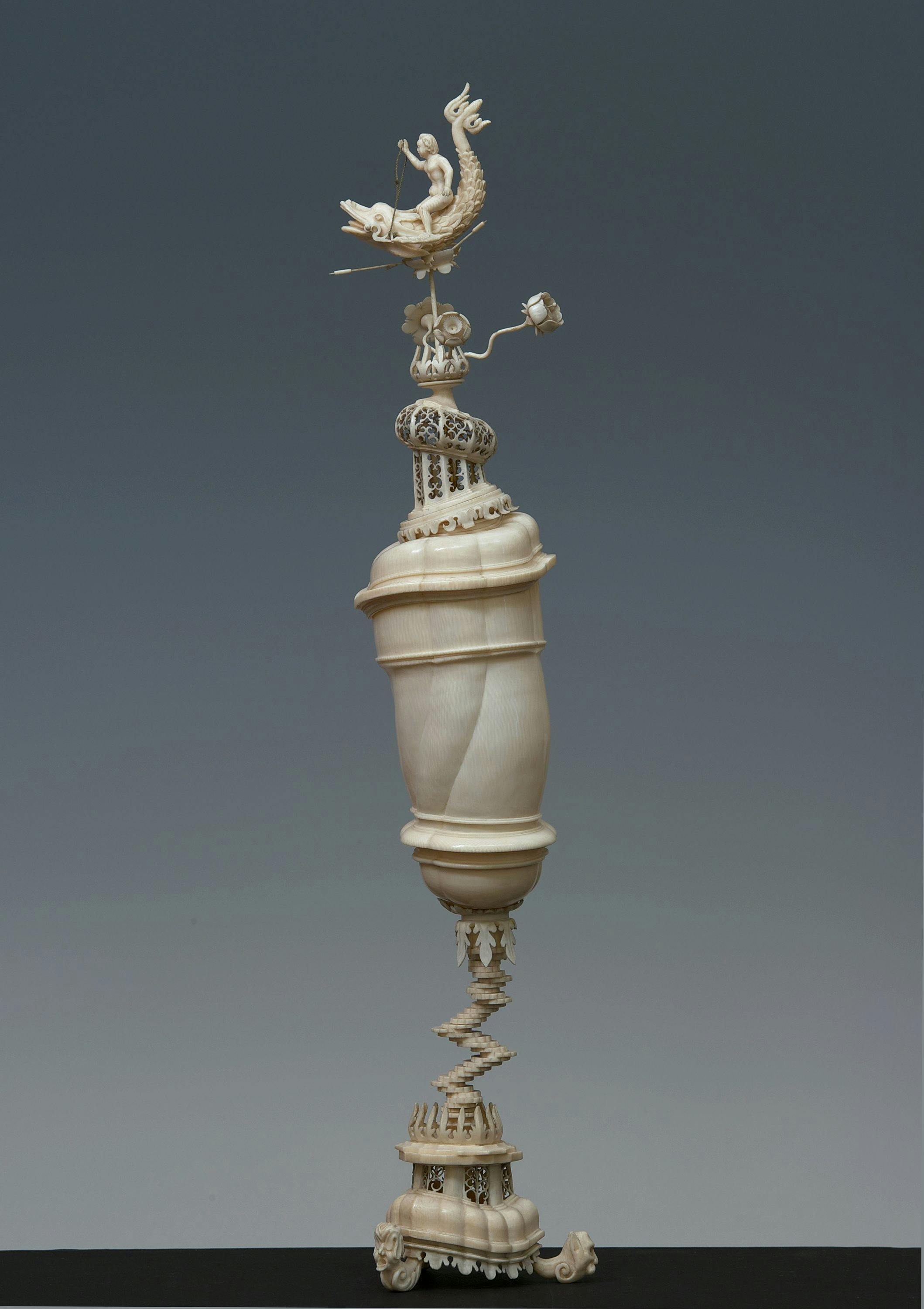Vase with lid
Marcus Heiden (news from 1618 to 1664)
Under the base, in three concentric circles: MARCVS - HEIDEN - COBURGENSIS - FRANCVS - FE; GLORIA IN EXCELSIS DEO; IN - YEAR - 1626
The monumental vase has an elegant openwork base. The upper part is marked by horizontal projecting ribs and, vertically, by helical incisions. The lid features an elaborate finial consisting of a finely pierced openwork lantern with a flattened, sloping sphere dome. On the inside is a medallion with two coats of arms: on the obverse is the coat of arms of the House of Saxony surrounded by the initials of the Duke of Coburg, Johann Casimir; on the reverse is the coat of arms of the House of Braunschweig with the initials of Margarethe von Braunschweig-Lüneburg, daughter of Duke Wilhelm von Braunschweig-Lüneburg, who was married to Johann Casimir in 1599. The lantern is surmounted by an elaborate group of flowers and the figure of a putto riding a dolphin mounted on a pin that allows it to turn on itself like a weather vane.
The magnificent specimen is part of a group of extraordinary and fragile ivory vases that were sent to Florence in 1633 by Prince Mattias de' Medici after the conquest and sack of the Bavarian city of Coburg by the Catholic imperial army. The work, like others in the group, bears under the foot the date 1626 and the signature of its maker, Marcus Heiden, the most important ivory turner of the Baroque age together with his disciple Johann Eisenberg. All the vases were made between 1623 and 1628 for Duke Johann Casimir of Saxe-Coburg, at whose court Heiden worked as a turner and fireworks expert. The information regarding his training is fragmentary, and probably took place in the workshop of turner Jakob Zeller in Dresden, a city in which the art of turned ivory experienced an important development from the end of the 16th century. From 1623 until 1633 Heiden worked for Johann Casimir in Coburg. After the duke's death, he first moved to Eisenach at the court of Johann Ernst, Johann Casimir's brother, and in 1638 to Weimar, where he was hired as a court turner by Duke Wilhelm IV of Saxe-Weimar.
Because of its size and structural complexity, the vase is among the most spectacular pieces made by Marcus Heiden. If, on the one hand, the feet with masks are still a reference to the goldsmith's art of the previous century, on the other hand, the eccentric shapes of the precious container and the decorative exuberance, appear to be in line with the stylistic features of Baroque art. The richness of the ornaments is combined here with the illusion of an unstable balance, rendered through the sophisticated game of the zigzag stacked discs of the stem and the slight arching of the body of the vase that follows the natural curvature of the elephant tusk.
